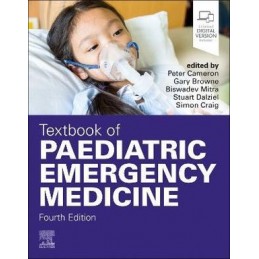- Reduced price

Order to parcel locker

easy pay


 Delivery policy
Delivery policy
Choose Paczkomat Inpost, Orlen Paczka, DHL, DPD or Poczta Polska. Click for more details
 Security policy
Security policy
Pay with a quick bank transfer, payment card or cash on delivery. Click for more details
 Return policy
Return policy
If you are a consumer, you can return the goods within 14 days. Click for more details
This leading text is essential reading for all those working in the paediatric emergency medicine setting who require concise, highly practical guidance that incorporates the latest best practice and evidence-based guidelines.
The Textbook of Paediatric Emergency Medicine provides clear, concise and comprehensive information to support clinicians in what can be a challenging area to provide care. It not only covers diagnosis and management of all common presentations, but it also includes practical tips on communicating with both patients and their families.
As a companion book to Cameron’s Textbook of Adult Emergency Medicine, this volume is specifically tailored to the educational needs of emergency medicine trainees, but is also expected to benefit others working in the emergency setting including paramedics and emergency nurse specialists.
Data sheet
Reference: 58874
Author: Catherine M. Otto
Atlas of Transesophageal Imaging
